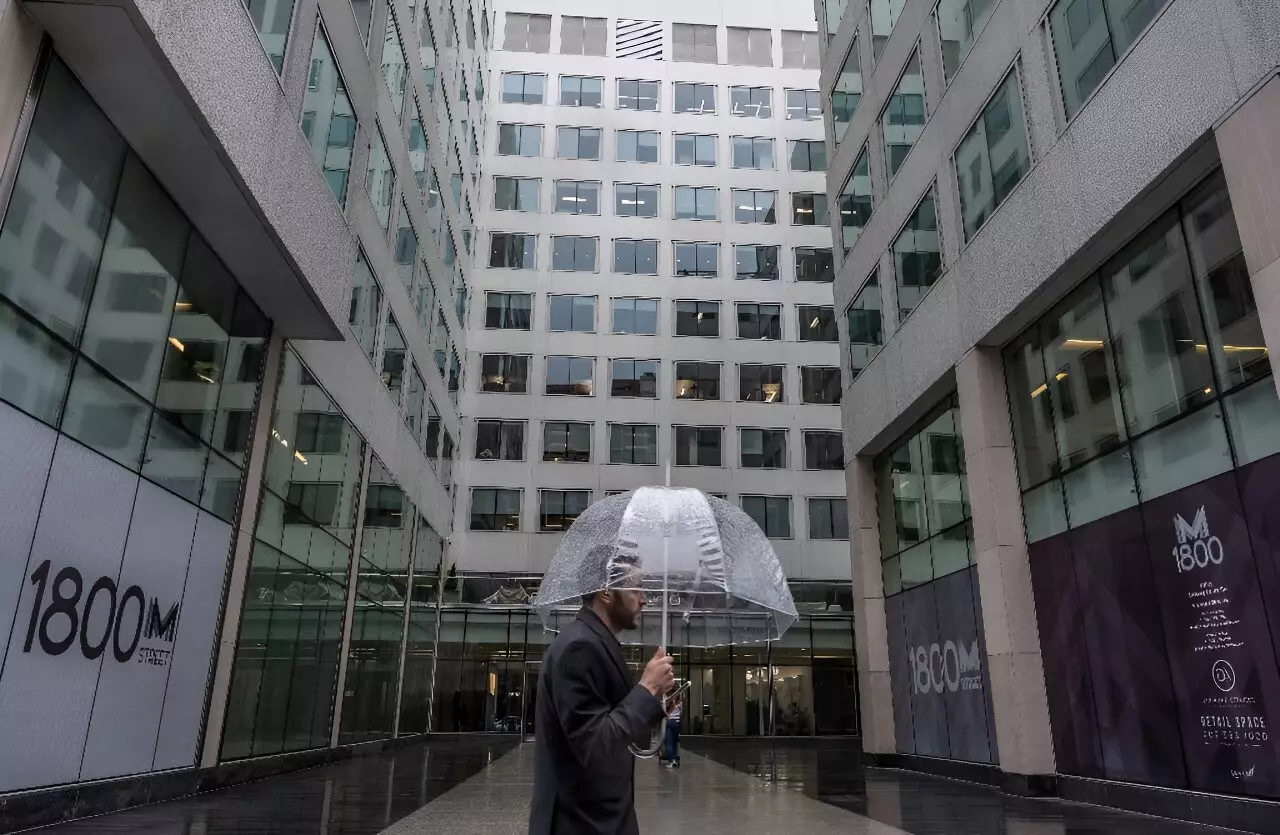The rise in popularity of remote work in the United States has led to a significant decrease in the number of people occupying office buildings. This trend has caused concerns among property owners as the value of these buildings has fallen, putting them at risk of losses on property loans. In cities like San Francisco, Washington, and New York, office spaces are now operating at half capacity compared to pre-pandemic levels, with white-collar workers showing a reluctance to return to traditional commuting practices.
The shift in work patterns has had a direct impact on the commercial real estate sector, resulting in a rise in office vacancy rates across the country. According to a report by Fitch Ratings, office vacancy rates have increased from 9.5 percent in 2019 to 13.5 percent in 2023, and this number is expected to reach 16.6 percent by the end of the next year. The downtown office districts in many cities are now underpopulated, posing challenges for retailers who used to cater to the employees working in these areas.
Risk of Bank Failures and Financial Implications
As a result of these changes, the commercial real estate sector has lost a third of its value, creating a ripple effect that could lead to bank failures, especially among smaller banks. A significant portion of office property mortgages, totaling $737 billion, are set to mature this year. However, with interest rates at a 20-year high, refinancing these loans may prove to be challenging, especially in cities with high vacancy rates and lower property valuations.
The risk of a “chain reaction” in the financial system is a cause for concern, as banks may face defaults from borrowers unable to meet their loan obligations. Chief economist Gregory Daco warned that smaller banks, retirement funds, and insurance companies that have invested in commercial real estate properties could be particularly vulnerable to these changes. The potential for losses in the real estate sector could lead to a reassessment of credit risk provisions, causing further stress on financial institutions.
Regulatory Measures and Mitigating Risks
National Economic Advisor Lael Brainard emphasized that the implications of these changes are primarily focused on a narrow class within the broader commercial real estate sector. While larger establishments may have the capacity to absorb some losses, smaller banks and other financial institutions could face significant challenges. The Federal Reserve is actively monitoring establishments with high concentrations of commercial real estate assets and engaging in dialogues to address potential risks and mitigate adverse outcomes.
The rise of remote work in the United States has had far-reaching implications on the commercial real estate sector, with office buildings sitting empty and vacancy rates on the rise. The financial system faces potential stress as banks and other financial institutions grapple with the challenges of refinancing loans in a changing market landscape. It is crucial for stakeholders to monitor these developments closely and take proactive measures to address the risks posed by the evolving dynamics of work patterns and property usage.


Leave a Reply